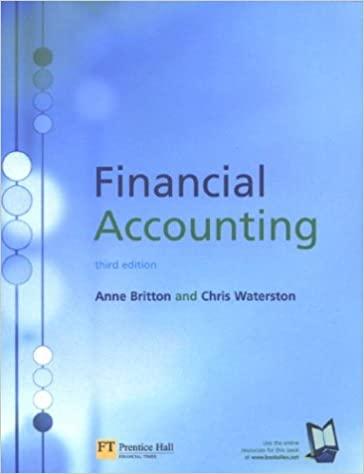Answered step by step
Verified Expert Solution
Question
1 Approved Answer
G. True/False Instructions: Place a T or F in the Blank 1. Notes receivable and accounts receivables can also be called trade receivables. 2. Receivables
| G. True/False | ||||||||||
| Instructions: Place a T or F in the Blank | ||||||||||
| 1. Notes receivable and accounts receivables can also be called trade receivables. | ||||||||||
| 2. Receivables from company owners and officers should be disclosed separately on the balance sheet. | ||||||||||
| 3. Receivables not currently collectible are reported in the investments section of the balance sheet. | ||||||||||
| 4. Since those responsible for receivables record keeping and credit approval do not handle cash, these | ||||||||||
| duties do not need to be separated to maintain good internal control. | ||||||||||
| 5. Maintaining the Accounts Receivable control account and the Accounts Receivable Subsidiary Ledger | ||||||||||
| should be assigned to the same employee for good internal control. | ||||||||||
| 6. When companies sell their receivables to other companies, the transaction is called factoring | ||||||||||
| 7. Of the two methods of accounting for uncollectible receivables, the allowance method provides in | ||||||||||
| advance for uncollectible receivables. | ||||||||||
| 8. When the estimate based on analysis of receivables is used, income is reduced when a specific | ||||||||||
| receivable is written off. | ||||||||||
| 9. When an account receivable that has been written off is subsequently collected, the account | ||||||||||
| receivable is reinstated. | ||||||||||
| 10. Although Allowance for Doubtful Accounts normally has a credit balance, it may have either a debit | ||||||||||
| or a credit balance before adjusting entries are recorded at the end of the accounting period. | ||||||||||
| 11. At the end of a period, before the accounts are adjusted, Allowance for Doubtful Accounts has a | ||||||||||
| credit balance of $250, and net sales on account for the period total $500,000. If Bad Debts | ||||||||||
| Expense is estimated at 1% of net sales on account, the current provision to be made for | ||||||||||
| Bad Debts Expense is $4,750. | ||||||||||
| 12. At the end of a period, before the accounts are adjusted, Allowance for Doubtful Accounts has a | ||||||||||
| debit balance of $500, and net sales on account for the period total $800,000. If Bad Debts | ||||||||||
| Expense is estimated at 1% of net sales on account, the current provision to be made for | ||||||||||
| Bad Debts Expense is $8,500. | ||||||||||
| 13. Allowance for Doubtful Accounts is a liability account. | ||||||||||
| 14. At the end of a period, before the accounts are adjusted, Allowance for Doubtful Accounts has a | ||||||||||
| debit balance of $2,000. If the estimate of uncollectible accounts determined by aging the | ||||||||||
| receivables is $30,000, the current provision to be made for Bad Debts Expense is $30,000. | ||||||||||
| 15. At the end of a period, before the accounts are adjusted, Allowance for Doubtful Accounts has a | ||||||||||
| credit balance of $5,000. If the estimate of uncollectible accounts determined by aging the | ||||||||||
| receivables is $50,000, the current provision to be made for Bad Debts Expense is $45,000. | ||||||||||
| 16. The difference between Accounts Receivable and its contra asset account is called net realizable value. | ||||||||||
| 17. The estimate based on sales method violates the matching concept. | ||||||||||
| 18. Allowance for Doubtful Accounts is a liability account. | ||||||||||
Step by Step Solution
There are 3 Steps involved in it
Step: 1

Get Instant Access to Expert-Tailored Solutions
See step-by-step solutions with expert insights and AI powered tools for academic success
Step: 2

Step: 3

Ace Your Homework with AI
Get the answers you need in no time with our AI-driven, step-by-step assistance
Get Started


